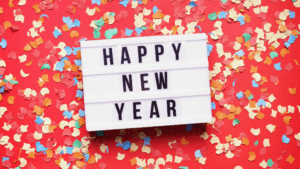
The evolution of “No”
My first word was not “Mama” or “Dada”. It was “No.”
It was probably cute at first. I hear nostalgia in my father’s voice when he recalls me saying “No I NOT!” about nearly everything as a toddler.
After a while, we all grow up and our “No” has to evolve with us:
- The head shake (quiet no)
- The foot stamp (emphatic no)
- “Over my dead body” (teenage drama no)
- “No sir” (the respectful civilian no)
- “I’d rather not” (polite no)
“No” or “Yes, on my terms”?
In many cases, our “No” is not about rejecting a concept or request outright. It can also be rejecting someone else deciding for us.
For example, taking naps. I may have been tired, but there was no way I wanted someone to tell me when I would sleep. Later, I rejected things I might enjoy if it was presented as a mandate.
What I really wanted to do was say “Yes,” but on my terms.
No is a complete sentence, and we need to be able to use it to create boundaries for ourselves. To be firm and confident about something that is not right for us.
As empowering as “No” can be, used too much, it can create the perception we are a closed door. A perception we do not want associated with us when opportunity comes knocking.
The many flavors of “Yes”
When we hear that knock, if it’s an opportunity we might want to consider, we would want to exercise some variety of “Yes”:
- “Sure” (unsure yes)
- The raised hand (student yes)
- “Absolutely” (confident yes)
- “Yes sir!” (emphatic civilian yes)
- Just do it (Nike yes)
While we want to raise our hands high for opportunities that seem made for us, we still want to be able to decline those that are not a good fit. Is there a way to do both and build the perception we are an open door versus a closed one?
We can find the “Yes” in almost any situation if we look for it. We can say “Yes” without becoming overwhelmed by commitments or doing for others at the expense of ourselves.
Finding our “Yes”
The key question in finding our “Yes” is: “What can I do?”
Maybe our child’s class is collecting donations (we receive several requests a year).
The same parents tend to volunteer event after event. Many working parents indicated they would be willing to help financially, but would not be able to take vacation to be physically present.
In this case, parents shared what they CAN do, instead of saying “No.” This ensured that all families contributed in a way that worked for them, rather than a handful taking the burden year after year.
The new approach lessoned resentment by the ones contributing, and a sense of guilt or frustration by those that wanted to help, but not in the way requested.
What about at work?
Be the open door
I was partnered with a colleague on a presentation, where we each owned a few slides to share what was happening with our teams. He was strapped for time, and wanted my help.
I could have said “no” and left him to his own devices. After all, I have my own commitments. Why aren’t they as important? That kind of thinking does nothing for our relationship, and a little bit of my time would go a long way to easing his burden.
I could have said “sure” and taken it all on. Some of the content I simply didn’t know, and I would have been frustrated trying to figure out what was needed. It would have impacted my work, building resentment and eroding the relationship.
Instead, I clearly articulated what I could do.
I was specific about what I could update on each slide. I also shared the few areas where he was more familiar and I would need help. I asked if he could complete those, or point me to someone on his team who had the knowledge I didn’t.
I did not focus on what I couldn’t or wouldn’t do (the “No”), I focused on what I could do (the “Yes”). My door stayed open, without taking on more than I could manage.
Exercising our “Yes”
Getting good at anything takes practice. I have spent many years saying “No.” Yet I have also raised my hand, stepped forward, and grabbed every opportunity presented to me.
If my “No” was getting exercised more than my “Yes” – I might have been seen as less open by key decision-makers. While I have had many opportunities made available to me, how many more did I miss?
Now I exercise my “Yes” daily. I figure out what I can do, and commit to that. There are times when I still say “No” (mainly to the seven year old at home who wants to stay up until midnight and eat nothing but junk food) but I am mindful of when and how it is used. I do my best to keep my door open.
Do you exercise “Yes” more than “No”? Would clarifying what you can commit to make it easier to say “Yes” without being overwhelmed? I’d love if you could share your thoughts in the comments and keep the conversation going.









One Response